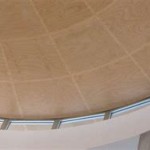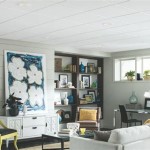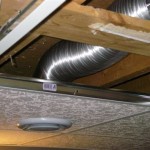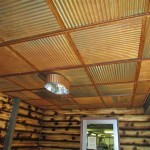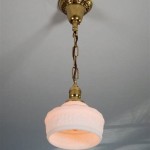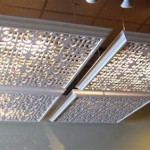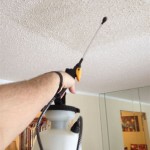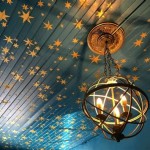Everything You Need to Know About Ceiling Fans with Heaters and Lights
Ceiling fans with heaters and lights represent a multifaceted approach to interior climate control and illumination. Combining three distinct functionalities into a single fixture, these appliances offer space-saving convenience and the potential for year-round comfort. Understanding the specific features, installation considerations, and operational nuances is crucial for making an informed purchase and maximizing the benefits of these integrated systems.
This article will explore the various aspects of ceiling fans with heaters and lights, examining their advantages and disadvantages, the technologies they employ, important purchasing criteria, and safety precautions to observe. The intention is to provide a comprehensive overview that empowers readers to effectively evaluate whether this type of fixture aligns with their individual needs and circumstances.
Understanding the Functionality
The primary function of a ceiling fan is to circulate air within a room. In warmer months, the fan blades are typically set to rotate counterclockwise, creating a downdraft that produces a cooling effect. This is achieved by disrupting the boundary layer of warm air that naturally forms around the skin, promoting evaporation and a sensation of lower temperature.
During colder periods, the rotation direction can be reversed to clockwise. This pulls cooler air from the floor upwards, gently redistributing the warmer air that accumulates near the ceiling. This process helps to equalize the temperature throughout the room, potentially reducing the strain on the primary heating system and contributing to energy savings.
The integrated heater component provides localized warmth, offering an alternative to central heating for smaller spaces or when only supplemental heat is required. These heaters typically operate using electric resistance coils or, in some higher-end models, infrared technology. The heat output is usually adjustable, allowing users to customize the level of warmth according to their preferences.
The lighting element provides ambient illumination, often using LED technology for energy efficiency and longevity. Many models offer dimming capabilities, enabling users to adjust the brightness to suit different activities and moods. The type and style of the light fixture can vary considerably, ranging from simple frosted glass shades to more elaborate designs with multiple bulbs or decorative elements.
Advantages and Disadvantages
Ceiling fans with heaters and lights offer several potential advantages. The space-saving design consolidates three separate appliances into one, freeing up floor space and reducing visual clutter. The combination of fan, heater, and light can contribute to energy efficiency by providing localized heating and cooling, as well as energy-efficient lighting options. Year-round comfort is another benefit, as the fan can be used for cooling in summer and heating in winter, while the light provides constant illumination. Finally, modern ceiling fans with these integrated features often boast stylish designs that can enhance the aesthetics of a room.
However, there are also some disadvantages to consider. The initial cost of a ceiling fan with a heater and light can be higher than that of a standard ceiling fan or a separate portable heater. Installation can be more complex, potentially requiring professional assistance, especially if electrical wiring needs to be modified. The heating capacity of these units is typically limited, making them unsuitable for heating large spaces. Noise levels can be a concern, particularly with older or poorly designed models. Finally, repair or replacement can be more challenging, as the integrated nature of the components may necessitate replacing the entire unit even if only one part malfunctions.
Key Purchasing Criteria
Several factors should be considered when selecting a ceiling fan with a heater and light. The first is
room size and ceiling height
. The fan's blade span should be appropriate for the room's dimensions to ensure effective air circulation. Higher ceilings may require a longer downrod to position the fan at the optimal height for performance. The heating capacity, measured in watts or BTUs, should be sufficient to warm the intended space; smaller rooms require less heating power than larger ones.Another key consideration is
energy efficiency
. Look for models with Energy Star certification, indicating that they meet certain energy-saving standards. LED lighting is generally more energy-efficient than incandescent or halogen bulbs. Choose a fan motor with a high energy efficiency rating to minimize electricity consumption during operation. Consider a DC motor fan; these are much quieter and more energy efficient than tradition AC motor fans. Also, check the amp draw of the heating element to understand how much energy it will consume when in use.Features and functionality
are also crucial. Decide whether a remote control is desired for convenient operation. Some models offer programmable timers, allowing users to schedule the fan, heater, and light to turn on and off automatically. Consider the availability of adjustable fan speeds, heat settings, and dimming options for the light. Safety features, such as overheat protection for the heater, are also important. Finally, ease of installation and maintenance should be factored in. Look for models with clear installation instructions and readily available replacement parts.Installation Considerations
Proper installation is essential for the safe and effective operation of a ceiling fan with a heater and light. It is crucial to ensure that the ceiling junction box is properly rated to support the weight of the fan and heater. If the existing junction box is not adequately rated, it must be replaced with a more robust one. If the ceiling box is not sufficient, it can lead to sagging and potential collapse.
Electrical wiring must be properly connected and grounded according to local electrical codes. If you are not comfortable working with electrical wiring, it is advisable to hire a qualified electrician to perform the installation. Incorrect wiring can create a fire hazard or cause electrical shock.
The fan blades must be properly balanced to prevent wobbling and excessive noise. Follow the manufacturer's instructions for balancing the blades. Using the provided balancing kit is usually the simplest solution. Wobbling is not only annoying but can also potentially loosen mounting hardware over time, creating additional hazards. The downrod length should be appropriate for the ceiling height to ensure optimal air circulation. Too short of a downrod will restrict the fans air-pushing capabilities.
In addition to the above, confirm that the fan blades are oriented correctly when installing. Incorrect orientation will cause the fan to fight against itself - decreasing its effectiveness. Double check the operation of the fan with both heating and lighting elements to ensure there are no underlying issues.
Safety Precautions
Several safety precautions should be observed when using a ceiling fan with a heater and light. Never leave the heater unattended, especially when children or pets are present. Overheating can occur if the heater is left running for extended periods or if it is obstructed by furniture or other objects.
Keep flammable materials, such as curtains and bedding, away from the heater to prevent fire hazards. Do not use the heater in damp or wet locations, such as bathrooms or kitchens, unless the unit is specifically designed for such environments. Electrocution can occur if water comes into contact with the electrical components.
Regularly inspect the fan and heater for any signs of damage, such as frayed wires or loose connections. If any damage is detected, discontinue use immediately and have the unit repaired by a qualified technician. Avoid touching the heater element directly, as it can become extremely hot during operation. Use the designated controls to adjust the heat settings. Finally, never attempt to modify or repair the unit yourself unless you are a qualified technician. Incorrect repairs can create a safety hazard.
It's also important to ensure the heater has overheat protection. This feature is designed to automatically shut off the heater if it reaches an unsafe temperature, preventing potential fires. Regularly clean the fan blades to prevent dust buildup, which can reduce its efficiency and increase the risk of overheating. Turn off the fan and heater before cleaning. Use a soft, damp cloth to wipe the blades. Avoid using harsh chemicals or abrasive cleaners, as they can damage the finish.
Energy Efficiency Tips
Maximize the energy efficiency of a ceiling fan with a heater and light by following these tips. Use the fan in conjunction with the air conditioner in summer to circulate cool air more effectively, allowing you to raise the thermostat setting and reduce energy consumption. In winter, use the fan to redistribute warm air from the ceiling, reducing the strain on the heating system. Turn off the fan, heater, and light when the room is not in use to conserve energy. When using the heater, close doors and windows to minimize heat loss. Use a programmable thermostat to automatically adjust the temperature according to your schedule. Finally, consider using a ceiling fan with a DC motor, which is more energy-efficient than traditional AC motors.

Heating Cooling What To Know About Ceiling Fans

Everything You Need To Know About Ceiling Fans Titan Electrical

Everything You Need To Know About Smart Fans Ideas Advice Lamps Plus

Secrets Of Energy Saving For Lights And Fans Bell Plumbing Heating Cooling Electrical

Upgrade Your Airflow 3 Ways To Smarten Ceiling Fans Wirecutter

Why Should I Use Ceiling Fans In Winter Heating Advice

Ceiling Fan Guide The Home Depot

What Direction Should Your Ceiling Fan Spin In Summer And Winter Delmarfans Com

How To For A Ceiling Fan Reviews By Wirecutter

Ceiling Fan Guide The Home Depot
Related Posts

